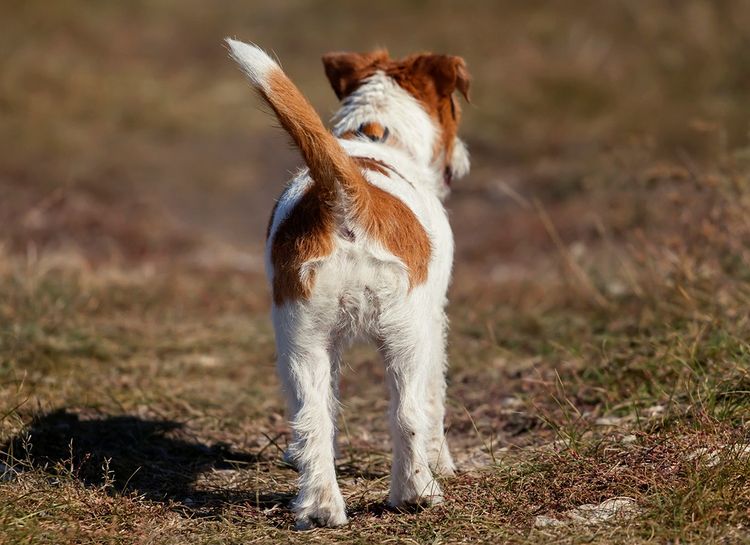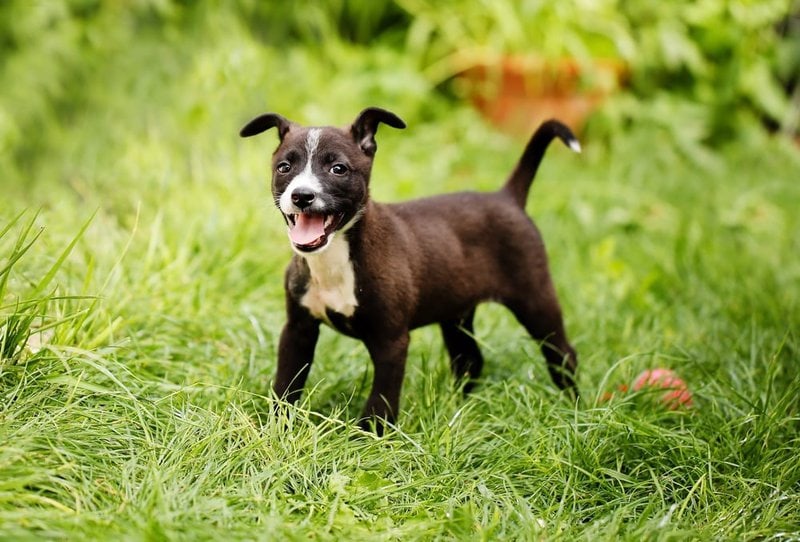Have you thought about why your furry friend wags their tail and you don’t know what your doggie is trying to communicate to you? There are many reasons why dogs wag their tails. In this article, we shall see many of them here and why they love it.
When dogs wag their tails, they use it to express the emotions elicited in them. They use this movement of their tail to interact with humans and their fellow doggies because their sight is better adapted in detecting movements than colors.
Many of them have very visible tails and some have spots on them. These make them easily use their tail as a means for communication. And, when a dog does not wag its tail at all, it could be a medical condition called the dead tail.
As we continue in this article, we shall see what a dog means when it wags its tail in different directions, we shall also see why dogs wag their tails on different occasions. However, let’s first look deeply at why dogs wag their tails.
Why Do Dogs Wag Their Tail?
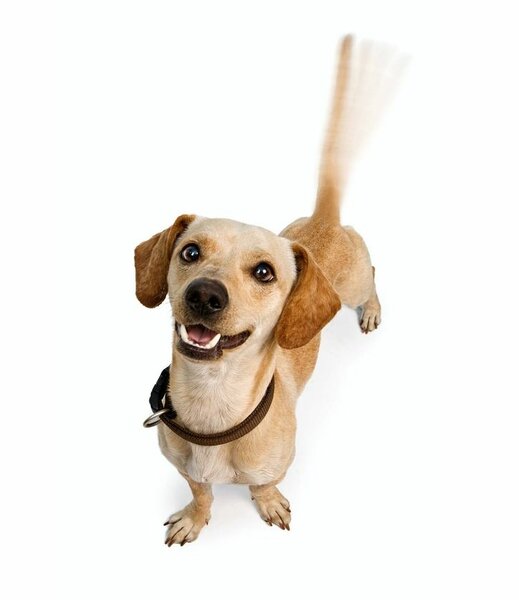
Dogs wag their tail to express their language and emotional state based on the pace and position of their tail.
When they do this, they will move their tail from its neutral position to another direction. Depending on where their tail points to, it could mean different emotions or messages they are trying to pass across to us.
Why Do Dogs Wag Their Tail When You Talk To Them?
Dogs wag their tail when you talk to them for many reasons. One of the most noticeable reasons is that they are happy to be with and interact with you.
Another reason is that they like their interaction with you, your attention to them, the tone of your voice, and the way you talk to them.
On the other hand, doggies may also wag their tail as a way to communicate with you. For example, when dogs get scolded, this could make them wag their tail. It is a way for them to politely say sorry.
At times, dogs also wag their tail as a way to politely refuse an order or say no.
Why Does My Dog Wag Its Tail When It Sees Me?
Your dog wags its tail when it sees you because it is happy to see you. As it cannot use words to communicate, it uses its tail to communicate.
Alongside using its tail, your doggie also uses its facial expression, ear position, body posture, and sounds like barking to communicate.
Why Does My Dog Wag Her Tail While Lying Down?
As a tail helps a dog for balance, a dog will wag its tail while lying down to correctly position itself. Also, this action prevents it from accidentally sitting on its tail and hurting itself.
Another reason is that your dog is sound asleep and it could wag its tail while dreaming about the adventures it had during the day.
Why Do Dogs Wag Their Tails While Sleeping?
When having a deep sleep, dogs could wag their tail because they are dreaming. This is due to the REM sleep state that occurs while they are asleep.
What Does My Dog’s Wagging Tail Position Mean?
A dog’s wagging tail position could mean different things ranging from calmness to aggressiveness, and happiness to nervousness. This depends on the tail position from its natural position and the speed of wagging it from side to side.
For different dogs, this natural position is different. For example, for a Pug, its tail curves upwards, and for a Greyhound, it has its tail slightly between its legs.
Below are some of the emotional states of our furry friends when they move their tails to a particular position.
Left
The left position usually shows negative emotions. This position can keep other dogs stressed or alert them about a perceived danger.
Right
Dogs wagging their tails to the right shows their positive emotions and can calm other canines as well.
Upward
When their tail is up, it shows a range of excitatory stimuli from happiness to insecurity about a stranger and aggression.
Downward
When nervous, submissive, or scared, the dogs bring their tail downwards and tuck it under their body. This position is opposite to the one they show when they are aggressive or happy.
Horizontal
When held straight, the horizontally straightened tail shows signs of curiosity and the dog becomes very focused at this time. Together with its unblinking eyes and crouching position, it goes into hunting mode.
Emotions Elicited When Dogs Wags Their Tail
In addition to bringing its tail in any of these positions, a dog will also wag its tail sideways. The wagging speed of their tails shows the intensity of their emotions and also means they are showing specific emotions. Here is a list of examples and what they mean.
Happiness
When a dog is happy, they move their tail slightly upward or it remains in its natural position. However, in addition to this, they could also wag their tails from side to side.
This indicates that they are very very excited. It could wag its tail so fast that it may even appear to vibrate to indicate an overexcitement.
Apart from this, the rate at which they move their tail in this position could also mean insecurity or even aggression
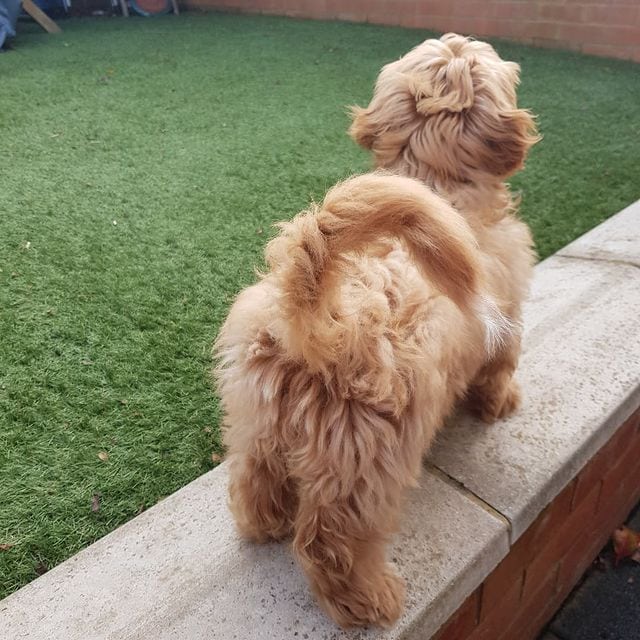
Insecurity
When a dog is insecure and wants to be defensive, it will wag its tail upwards and sideways very slowly. This scenario usually happens when a dog meets faces he is unfamiliar with such a person or another dog.
Aggression
On perceiving a threat, a dog will show aggression when its tail is raised vertically and it wags it very fast.
This position shows that they are ready to confront and attack anyone that comes their way. The higher the tail goes the higher their raid.
At the same time, they raise their tail, they also release scent from their anal glands announcing their presence and waving off anyone from their territory.
Submission
When submissive a dog moves its tail downward from its natural position. A dog may be scared and could ask for permission not to be hurt by tucking its tail tightly between its legs.
The dog also couches to a lower position at the same time. This lower position shuts the anal glands from releasing their content, allowing the dog to be able to bounce away from danger safely and promptly.
Friendliness
An overly friendly dog will wag/sweep its tail downwards more freely from side to side and may even move its hip along.
Negotiation
When a dog is wagging its tail before but ceases to do so again it means it wants to prevent a threat without being hostile. Some doggies do this when petted by strangers to show them that they do not want the interaction anymore.
Why Do Dogs Wag Their Tails And Growl?
One major reason our furry friends wag their tails and growl afterward is that they are feeling threatened. It may also be that they are excited, for example, they may growl and wag their tail when playing.
It can also be that it has learned that there is a positive reward from doing so.
Why Do Dogs Wag Their Tails When They Are In Trouble?
When dogs sense they are in trouble, they wag their tails. If they get into trouble as a result of doing the wrong thing, and you scold them, they will still wag their tail as a way to say sorry and calm you down.
Nevertheless, it is still not recommended to scold our furry friends because scolding could affect and hurt your relationship. It’s best to show them the right thing to do rather than scold them for the wrong thing.
If the perceived trouble is due to a threat or an attack, dogs will wag their tail to show insecurity and alert other doggies around them.
If it is not feeling insecure and wants to attack, dogs will wag their tail in an upward position to fight back and will growl at the same time.
Do Dogs Wag Their Tails When They Attack?
Yes, dogs wag their tails when they want to attack. Usually, the position of their tail will be that of aggression by raising and curving it upwards.
Wagging their tail can prepare them for the action ahead.
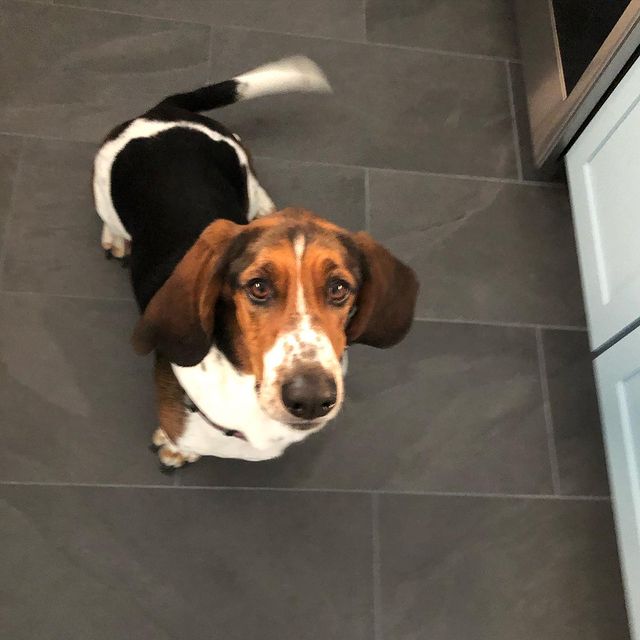
Why Does My Dog Not Wag His Tail Anymore?
If your dog suddenly stops wagging its tail, it could be due to a condition known as a dead tail. It is also known as limber’s tail, cold tail, or swimmer’s tail and will require you to see your veterinarian.
A dead tail is a muscular injury in the tail that may be caused by overexertion of the tail muscles, performing physical activities in ill health, and exposure to very cold water or cold weather.
Your doggie will have pains when it has a dead tail. Other symptoms are difficulty in sitting, walking, or running and swelling around the tail joint.
To treat a dead tail, you should visit your veterinarian. Your vet will rule out any other condition that could be similar to a dead tail. Additionally, your vet will prescribe the necessary Nonsteroidal Anti-inflammatory Drugs (NSAIDs) for your furry friend.
You should also exclude your doggie from any physical activities at this time and allow sufficient time to recover. A dead tail gets better after a few days.
